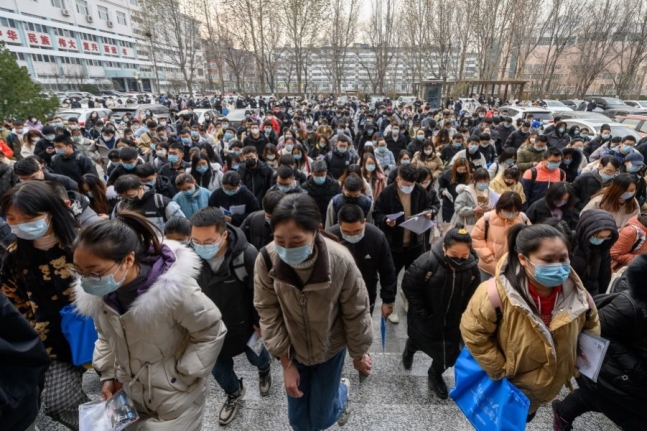
According to China’s Maeil Business Newspaper on the 16th, the process of appointing state officials (Kukao, 考) in China in 2024 began officially on October 15. Through this appointment process, the Chinese government plans to select 39,600 people from 18,948 series. This is a 6.7% increase from last year, and China has been increasing the number of state officials for five consecutive years.
By region, Hainan Province increased the number of people selected by 70.2%, while Jiangxi Province (28.1%), Qinghai Province (28%), Sijang (Tibet) Autonomous Region (26.2%), and Guizhou Province (25.6%) also increased the number of people selected by more than 20%.
Ryu Yo-jeon, a senior researcher at Hualu Education, said, “When looking at the number of people selected and tested in each region, Guangdong Province has the largest number of people selected, with more than 3,000, and the number of people selected in Sijang (Tibet), Ningxia, Qinghai, and Hainan is small, with less than 500 people.”
Along with China’s civil service examination craze, competition in the civil service examination education market is intensifying. Researcher Ryu predicted, “The education market will also grow because the size of civil service exams is significant.”According to the 2024 recruitment announcement for Chinese state officials, the number of people selected is mainly concentrated in tax, customs, railway police, and immigration offices. In particular, the number of people selected by the Chinese tax system was 24,008, accounting for 60.7% of the total number of people selected.
The number of applicants has more than doubled in four years from 1.27 million in 2019 to 2.6 million in 2023 due to the craze for civil servants for several years.
Recently, Chinese university students prefer the public sector, which is called “within the system” (within the 制) in China. As China’s economic growth slowed after COVID-19, the growth of private Chinese companies seems to have already peaked, which is another factor that encourages university graduates to prefer the public sector.
While the number of Chinese university graduates reached a record 11.58 million this year, the youth unemployment rate rose as the demand for private companies declined due to the falling real estate market and the Chinese government’s regulations on private companies such as platforms and private education. When China’s unemployment rate for young people aged 16 to 24 hit an all-time high of 21.3% in June, the Chinese government stopped announcing the youth unemployment rate altogether.
EJ SONG
US ASIA JOURNAL



